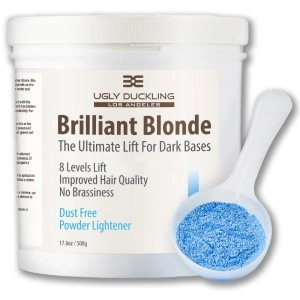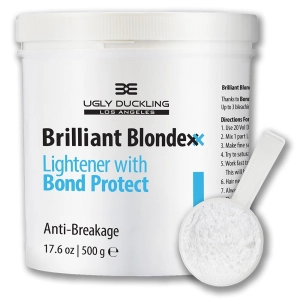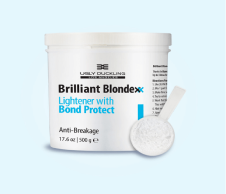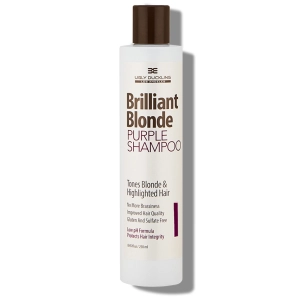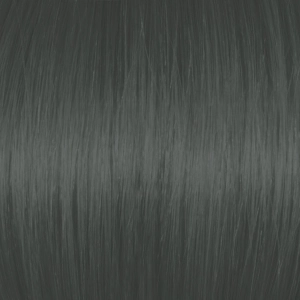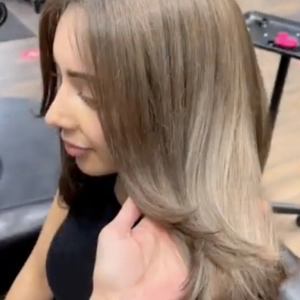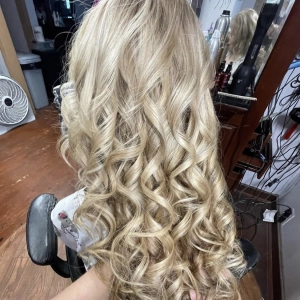Bleaching hair is an art and science combined. Whether you’re a professional colorist or a dedicated DIY enthusiast, understanding which bleach to use and how to apply it safely and effectively is essential to achieving the perfect blonde or lightened look without compromising hair health. At Ugly Duckling Color, we pride ourselves on delivering professional-grade products and expert advice to help you master hair bleaching.
This guide will walk you through everything you need to know—from selecting the right bleach and developer strength to mastering application techniques and timing your process for optimal results.
Understanding Hair Bleach: What It Does and How It Works

Hair being bleached at the regrowth area using Brilliant Blondexx
Hair bleach works by breaking down the natural melanin pigment in your hair, effectively removing color and lightening your strands. The active ingredient in bleach is usually a form of peroxide combined with an alkaline agent that opens the hair cuticle, allowing the bleach to penetrate the cortex and dissolve melanin.
The bleaching process is continuous until the bleach is rinsed out, which means timing is crucial. Leave it on too long, and you risk severe damage; too short, and you won’t get the desired lift. The goal is to reach a pale yellow shade (level 10 blonde) for the best canvas to tone or color over.
Choosing the Right Bleach for Your Hair
At Ugly Duckling Color, we offer two main professional bleaches tailored to different hair needs:
Brilliant Blonde Bleach: Designed for dark, Asian, and Hispanic hair, Brilliant Blonde is a powerful 8-level bleach ideal for lifting very dark or previously colored hair. It is formulated to deliver high lift while maintaining hair integrity[3].
Brilliant Blondexx with Bond Protect: This cream bleach is perfect for finer hair or when you want a gentler lift with added bond protection. It’s designed to minimize damage and keep hair strong during the bleaching process.
Which bleach should you use?
For most regular hair types, especially light to medium brown hair, for hair that is fine or fragile, and for bleaching near to the scalp, Blondexx with Bond Protect is an excellent choice, especially when you want to protect hair bonds and reduce damage to the hair and to the scalp.
For very dark, coarse, or previously colored hair, especially for hair that has been colored darker or even black, Brilliant Blonde is recommended. It provides stronger lift.
Which Developer Strength to use with your Bleach
Developers (also called oxidizing agents) come in different volumes—commonly 10, 20, 30, and 40 Volumes. The volume you choose controls how much lift (lightening) you get:
10 Vol (3% peroxide): Minimal lift, mostly used for depositing color rather than lifting.
20 Vol (6% peroxide): Lifts hair up to 2-3 levels; ideal for root touch-ups and gentle lightening.
30 Vol (9% peroxide): Lifts hair 3-4 levels; used for darker hair needing stronger lift.
40 Vol (12% peroxide): Maximum lift but with higher risk of damage; generally reserved for professionals and specific situations.
At Ugly Duckling Color, the developers that we typically recommend for bleaching are 20 Vol and 30 Vol.
Use 20 Vol for delicate applications near the roots or when lifting up to 3 levels, and 30 Vol when you need more lift or are working with very dark hair.
And use 20 Vol when making a second bleach mix to apply on the hair.
Preparing for Bleaching: Hair Analysis and Strand Test
Before you begin, always analyze the condition of the hair. Consider:
Hair texture (fine, medium, coarse)
Previous chemical treatments (color, relaxers, perms)
Hair porosity and elasticity
Perform a strand test to check how the hair reacts to bleach, how quickly it lifts, and to assess potential damage. This test helps you adjust timing and product choice to avoid over-processing and indeed under-processing.
Sectioning and Timing
If you are doing a full head bleach, and the entire head is the same color (virgin hair, for example), then divide hair into four large sections—two front and two back—and secure with clips for neat, manageable application.
If you are doing a regrowth application, and the regrowth part is the darkest, start on that part first, using 20 Vol. When doing the root area, apply bleach 2 cm away from the roots initially to give the parts further away from the scalp a head start. Then go back to the root area itself. It will lift the fastest, because it is getting heat from the scalp and because it is virgin hair.
Then once that section has lifted, extend to the parts of the lengths which require some more bleaching - those parts that are too orange or too yellow.
If you have parts of the lengths (the ends, for example) which are white that means they have been bleached a lot in the past. You should not re-apply bleach there, otherwise you could get breakage. You can just tone them gently using an ammonia-free gentle toner like Blondify at the end.
The goal of the bleaching process should be to get the whole head to a uniform level 10 very pale lemon yellow color. You should consider anything less than that (bright yellow, orange yellow or yellow) a failure. Pull out some more bleach and some 20 Vol, make a fresh mixture and re-apply. Only stop bleaching when you get to a consistent level 10 everywhere.
Application Method
Use a tint brush to generously apply bleach, fully saturating each strand. Avoid tentative or sparse application; hair must be drenched for even lift[3].
For very dark hair requiring heavy lift, consider doing a foil application. Foils trap heat, speeding up processing and improving lift. Cut foil strips before mixing bleach and keep them handy, because you won’t get time during the bleaching process. Place a section of hair inside a strip of foil and apply bleach generously on hair sections, then wrap up the foil.
You can use indirect heat to speed up bleach processing as in the picture below:

Bleached hair processing with heat
Regularly perform a scrape test by gently scraping off a small amount of bleach to check the lightening progress. This helps prevent over-processing and damage. If you have been using foil this means opening up one section of the foil and doing the scrape test on the hair inside.
How Long Should You Leave Bleach On?
Processing time varies depending on hair type, color, and desired level of lift:
Typically, bleach is left on for between 20-45 minutes, with frequent checks every 10-15 minutes.
Avoid leaving bleach on longer than 45 minutes to prevent excessive damage.
Darker hair takes longer to lift; lighter hair processes faster.
If after 15-20 minutes you see orange or brassy tones, it means that you need to reapply fresh bleach with 20 Vol developer to those areas to continue lifting safely. Remember that as soon as bleach mix dries out on the hair, it isn’t working any more. So your fresh bleach mix is necessary to keep lifting that hair.
See a picture below of what hair should look like when it is ready to rinse:
.png)
This hair is ready to be rinsed
How Many Levels Can You Lift in One Session?
With quality products like Ugly Duckling’s Brilliant Blonde bleach and proper technique, you can lift hair up to 8-9 levels** in one session—from black or dark brown to a very pale blonde. In general, at Ugly Duckling we prefer to “do it once and do it right.”
We don’t recommend what some stylists do: multiple bleaching sessions spaced out over time. That is a waste of time and means that you bleach hair over and over again.
Protecting Hair Health During Bleaching
Bleach can be harsh, but you can minimize damage by:
Using bond-protecting formulas like Brilliant Blondexx with Bond Protect.
Avoiding overlapping bleach on previously lightened or fragile hair.
Performing regular deep conditioning treatment after bleaching such as Brilliant Blondexx shampoo and mask.
Rinsing hair thoroughly once the desired lift is achieved.
Avoid heat styling immediately after bleaching to reduce breakage.
Aftercare: Maintaining Your Bleach and Blonde Hair
Post-bleach care is vital to keep hair healthy and vibrant.
Use sulfate-free, acidic shampoos and conditioners when possible.
Try also to use products with Bond Protect. For example: Brilliant Blondexx Shampoo and Mask.
Brilliant Blondexx is also sulfate-free and acidic. Meaning that it will prevent build-up on the scalp and also help close the hair cuticles.
Whatever you use, don’t over-wash the hair. Twice a week is good enough for most women.
Avoid using excessively hot water and avoid excessive heat styling as much as possible.
Using purple based shampoos and masks will help neutralize brassiness and maintain cool blonde tones. You should use these products once per week.
So, a suggested weekly haircare routine would be:
Once a week: Brilliant Blondexx Shampoo and Mask.
Once a week: Purple Shampoo and Mask.
If necessary, for remaining washes in the week use either a very light clarifying shampoo or a dry shampoo.
Troubleshooting Common Bleaching Issues
Uneven lift or patchiness: Often caused by uneven application or insufficient product saturation. Always apply bleach generously and section hair carefully.
Excessive damage or breakage: The most common reason for this is the use of excessively strong developer (40 Vol, for example) or overlapping onto white hair which has already been bleached too often in the past. Avoid these two mistakes and you should be able to avoid damage and breakage.
Orange or bright yellow after bleaching: This simply means that you did not bleach enough. Take out some more bleach and 20 Vol and re-apply, saturating really well so that the hair is really drenched in the bleach mixture. Wait and watch. You should see the difference!
Toning After Bleaching
Even if you use purple shampoo and mask to fight yellow, you still need to tone with a quality toner after bleaching the hair.
Use the chart below to choose the right toner for you.
.jpg)


